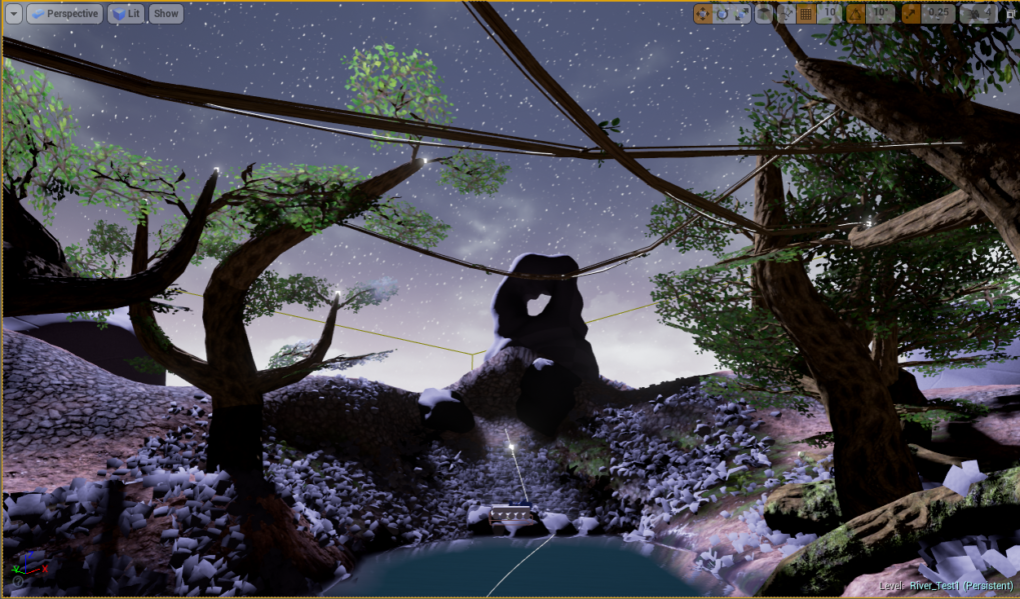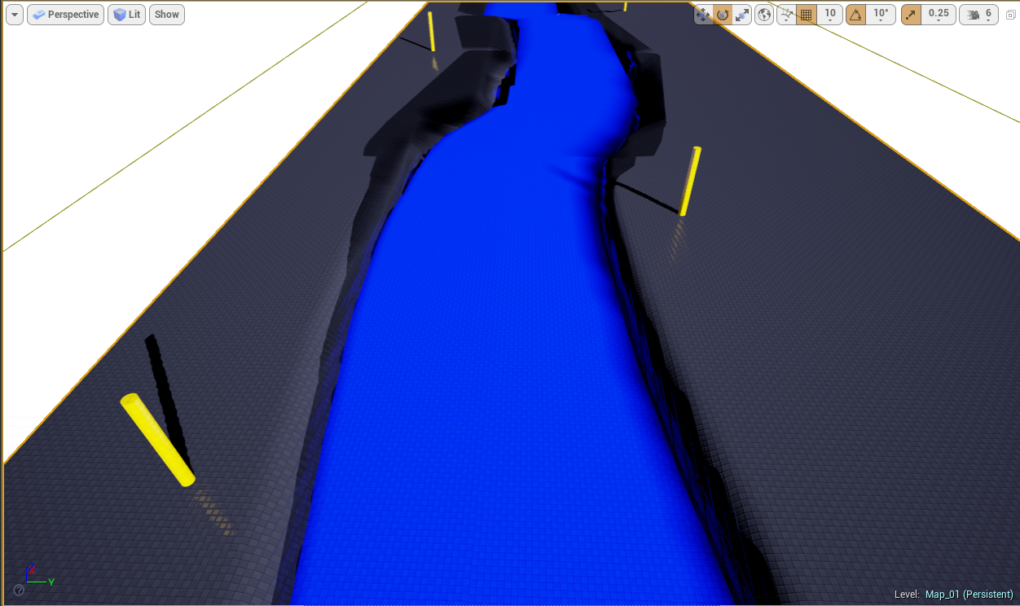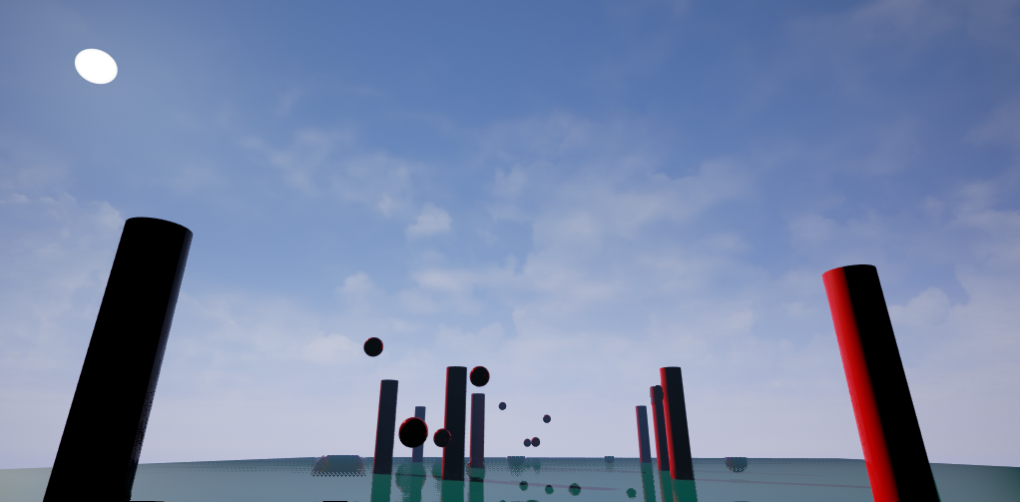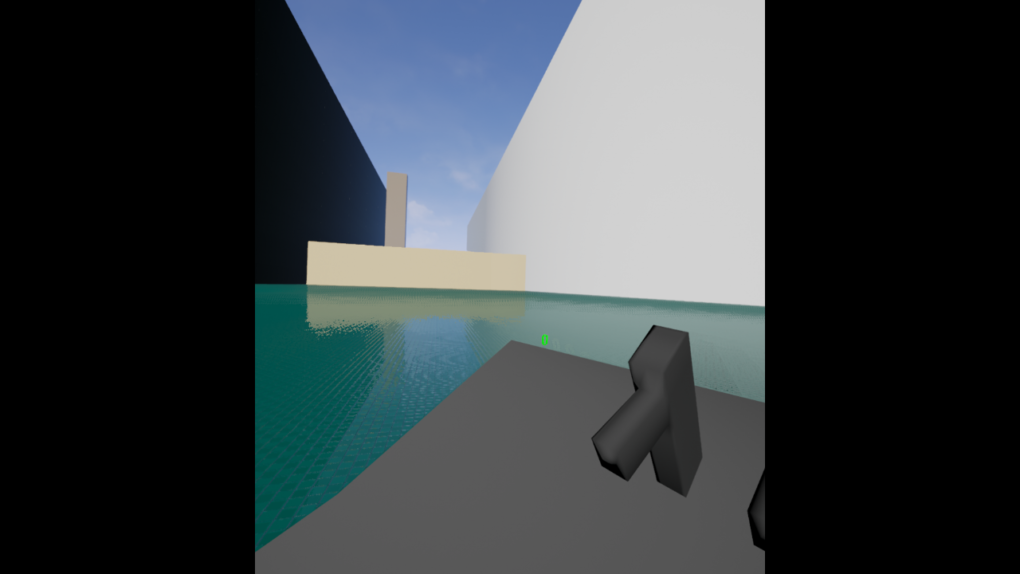Trying To Find The Fun
August 3rd, 2016
How do you make a game fun to play?
It’s been a while since my last dev log post so let me catch you guys up on what I’ve been working on lately. Milo’s Many Nightmare’s is officially on hold, and it’s on hold for the same reason that Project Zeds is on hold, I accidentally designed a game too large to complete by myself. I want to finish a game so I’ve got to stop designing these huge games, and instead be willing to settle for a small but fun and entertaining gaming experience.
How do you design something that’s small and fun to play though? I don’t know, but I do know, while I’m playing a game, if that game is any fun to play. So I set off on a series of short game play prototypes in hopes of finding the one that was fun to play.
From the beginning I knew I wanted this new game to be a virtual reality experience. Why? Because I had just bought a Vive and I liked playing with my new toy. Other than that I didn’t have much of a plan. I’d found that most VR experiences I had played had chosen to be either stationary or included some sort of teleport mechanic to move the player around the virtual world. I didn’t want to do either. So I started brainstorming Ideas for movement in a room-scale VR game.
Prototype #1
Because you can’t physically move outside of the bounds of the room you are in, I decided to experiment with making the room itself move. My first prototype was a rafting game. The rooms floor became the raft and the player’s hands became oars that they could paddle with.
I made the grave mistake of trying to make this prototype look nice. It’s much prettier than the the rest of the prototypes, but took way too much time for something I ultimately just threw away.
What worked:
- Paddling the raft was pretty intuitive.
- The raft itself gave a great visual point of reference for the movement and felt a lot more natural than just moving the player by himself/herself.
What didn’t work:
- Paddling was clumsy.
- Having both of the player’s hands tied up with paddling meant there was little room for any other interaction with the virtual world.
- Having oars meant that the player had to keep moving to the outer bounds of the room in order to paddle. This necessarily meant that I kept running face first into my own wall.
- To much time was spent trying to make this prototype look pretty. It really should have just been grey boxed.
Prototype #2
I kept the raft from prototype number one but got rid of the paddles. I replaced the paddles with two guns. The gun on the right hand fired bullets. The gun on the left fired a tether similar to the grappling hook from the Just Cause series.
What worked:
- The tether was an improvement over the oars. It allowed the player to pull himself down the river by latching onto things along the rivers edge.
- Adding a gun to one hand allowed the player to shoot at targets as he/she traveled down the river making the game feel a little more fun.
What didn’t work:
- River + tether meant that the player kept running into the river bank.
- The tether was also a really clumsy way to move, meaning that obstacles in the river didn’t feel fair.
- Shooting + moving felt good but it felt weird trying to look for incoming obstacles, enemies to shoot at and things to tether all at the same time.
- It was hard to come up with a story for why the player had some high tech tether but only had a raft with no other means of steering.
Prototype #3
For this prototype I threw out quite a lot from the previous 2. You weren’t on a raft anymore. Instead you were on a big hovering platform. The platform was constantly moving in the forward direction at a fast speed. In each hand the player had a gun. Squeezing the trigger fired the gun but squeezing the handle strafed the platform in that direction. Think Galaga in VR.
What worked:
- This was the first prototype that felt pretty good.
- Using the handle buttons for movement was pretty intuitive and left the triggers and trackpads open for other uses.
- Having the player constantly moving forward at a fast pace felt exciting and made it a much more high energy game.
- Dodging obstacles and firing at enemies felt great.
What didn’t work:
- Moving the player as fast as I was opened up a lot of tracking issues for the controllers.
- Having a wide open outdoor environment made me worry I was biting off too much work again.
- Side to side movement wasn’t enough.
Prototype #4
I got rid of the large outdoor environment from the last prototype and brought the whole thing inside. I added a jump mechanic to the platform. Squeezing both handles at the same time moves the platform vertically and letting go allows it to float back to the ground. I also implemented the fix from my last post, so now technically the platform isn’t moving at all which fixed the controller jitter.
What worked:
- Bringing the level inside will allow me to make the environments more interesting. It also gives a better understanding of the speed of the craft.
- Bringing the level inside gave a greater sense of scale.
- Moving the world and not the player fixed the controller jitter issues.
What didn’t work:
- Bringing the level inside opened up a whole bunch of lighting issues.
- Moving the world and not the player opens up a lot of movement issues for the enemies.
Conclusion
I guess I started with a simple river rafting game and now I’m working on a VR Shmup / Bullet Hell type game. I hadn’t planned on this from the beginning, but it’s what feels fun to me so I’m going to go with it. Currently it’s still in the early prototype phase. I’m really enjoying this type of game design. My next plan is to start introducing different enemies, obstacles and features and to see how they feel. I’m taking each thing and asking the question “does this make the game feel more fun?” If so it stays in. If not it gets removed.
back to blog



